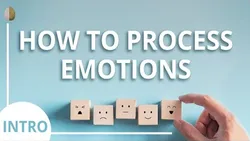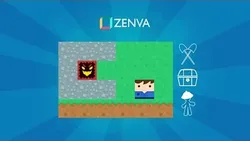
How to Process Your Emotions- Learn to Control your Feelings 
This course teaches participants how to process their emotions in a nonjudgmental way. It covers topics such as the lie of positive and negative emotions, how to name it to tame it, and 30 depression and anxiety skills. Participants will learn how to control their feelings and gain insight into their emotional states. ▼
ADVERTISEMENT
Course Feature
![]() Cost:
Cost:
Free
![]() Provider:
Provider:
Youtube
![]() Certificate:
Certificate:
Paid Certification
![]() Language:
Language:
English
![]() Start Date:
Start Date:
On-Demand
Course Overview
❗The content presented here is sourced directly from Youtube platform. For comprehensive course details, including enrollment information, simply click on the 'Go to class' link on our website.
Updated in [February 21st, 2023]
What does this course tell?
(Please note that the following overview content is from the original platform)
How to Process Your Emotions: Course Introduction/30 Depression and Anxiety Skills Course.
Name It to Tame It: How to Process Emotions 1/30.
A Nonjudgmental Attitude: The Lie of Positive and Negative Emotions: Process Your Emotions 2/30.
Why Coping Skills Can Make It Worse: How to Process Your Emotions 3/30.
Clean vs. Dirty Pain: Are You Creating Your Own Suffering? How to Process Your Emotions 4/30.
How to Stop Struggling With Anxiety and Intense Emotions 5/30 How to Process Emotions.
Willingness: How to Feel your Feelings 6/30 How to Process Emotions.
Primary Emotions vs. Secondary Emotions - Skill 7/30 How to Process Emotions.
The Mind-Body Connection 8/30 How Emotions Get Trapped in the Body.
How Anxiety Affects the Brain 9/30 How to Recognize and Turn off the Fight/Flight/Freeze Response.
How to Release Emotions Trapped in Your Body 10/30 How to Process Emotions Like Trauma and Anxiety.
Calming Anxiety With Your Body’s Built-in Anti-Anxiety Response 11/30.
How to Turn off the Fear Response 12/30 Create a Sense of Safety.
Coping Skills for Anxiety or Depression 13/30 How to Process Emotions.
How to Turn off the Fight/Flight/Freeze Response With Grounding Skills for Anxiety.
How to Move Past Mental Blocks: 15/30 Remove Mental and Emotional Blocks.
Neuroplasticity: Change How You Feel by Changing How You Think 16/30.
Reframe Your Negative Thoughts: Change How You See the World 17/30 How to Process Emotions.
Cognitive Distortions: Cognitive Behavioral Therapy Techniques 18/30.
How to Change How You Think Cognitive Distortions Part 2.
Intrusive Thoughts and Overthinking: The Skill of Cognitive Defusion 20/30.
Mindfulness for Anxiety A Beginner's Guide 21/30.
Cognitive Dissonance: Emotion Processing 22/30.
Self-Deception 23/30 The Problem of Not Knowing You Have a Problem.
How to Create the Life You Want, One Small Change at a Time.
Why Trying to Feel Happy Backfires: Purpose vs. Happiness- 25/30 How to Process Emotions.
Fight Depression and Anxiety With Your Core Values 26/30 How to Process Emotions.
Get Rid of Self-Limiting Beliefs 27/30 How to Process Emotions.
A GROWTH Mindset vs. a FIXED Mindset With Mental Health.
How to Stop Beating Yourself Up 29/30 Self-Compassion.
What's the Core Issue? How to Actually Change 30/30.
THE CHOICE: Act, Accept, or Run Away 31/30 How to Process Emotions- Course Summary .
Mastering the Paradox of Acceptance and Change With Anxiety- Acceptance and Commitment Therapy.
How to Deal With Anxiety - The Step-by-Step Guide.
We consider the value of this course from multiple aspects, and finally summarize it for you from three aspects: personal skills, career development, and further study:
(Kindly be aware that our content is optimized by AI tools while also undergoing moderation carefully from our editorial staff.)
This course provides an in-depth look at how to process emotions, from understanding the difference between primary and secondary emotions to learning how to turn off the fear response and create a sense of safety. It also covers topics such as cognitive distortions, cognitive dissonance, self-deception, and self-limiting beliefs. Finally, it provides an overview of Acceptance and Commitment Therapy and how to use it to fight depression and anxiety.
Possible Development Paths include becoming a mental health counselor, a cognitive behavioral therapist, or a life coach. Learners could also pursue a degree in psychology or a related field.
Learning Suggestions for learners include reading books on cognitive behavioral therapy, mindfulness, and Acceptance and Commitment Therapy. Learners could also take courses on mental health, self-compassion, and emotional intelligence. Additionally, they could attend workshops or seminars on topics such as anxiety, depression, and stress management.
[Applications]
Completing this course will provide individuals with the skills and knowledge to better process their emotions and control their feelings. They will learn how to identify and tame their emotions, develop a nonjudgmental attitude, and understand why coping skills can make it worse. They will also learn how to release emotions trapped in their body, turn off the fear response, and use cognitive behavioral therapy techniques to reframe their negative thoughts. Additionally, they will learn how to create the life they want, fight depression and anxiety with their core values, and develop a growth mindset. Finally, they will learn how to accept and commit to change with anxiety and how to deal with anxiety in a step-by-step guide.
[Career Paths]
Three job positions that could be recommended to learners of this course are:
1. Mental Health Counselor: Mental health counselors help individuals, couples, families, and groups of people with mental health issues, such as depression, anxiety, and trauma. They provide counseling, therapy, and support to help people cope with their mental health issues. The demand for mental health counselors is increasing due to the rising prevalence of mental health issues, and the development of new treatments and therapies.
2. Cognitive Behavioral Therapist: Cognitive behavioral therapists help people identify and change negative thought patterns and behaviors that are contributing to their mental health issues. They use evidence-based techniques, such as cognitive restructuring, to help people develop healthier thought patterns and behaviors. The demand for cognitive behavioral therapists is increasing due to the growing awareness of the importance of mental health and the effectiveness of cognitive behavioral therapy.
3. Life Coach: Life coaches help people identify and achieve their goals, and develop strategies to overcome obstacles and challenges. They provide guidance and support to help people reach their goals and live a more fulfilling life. The demand for life coaches is increasing due to the growing awareness of the importance of personal development and the effectiveness of life coaching.
Course Provider

Provider Youtube's Stats at AZClass
Over 100+ Best Educational YouTube Channels in 2023.
Best educational YouTube channels for college students, including Crash Course, Khan Academy, etc.
AZ Class hope that this free Youtube course can help your Mental Health skills no matter in career or in further education. Even if you are only slightly interested, you can take How to Process Your Emotions- Learn to Control your Feelings course with confidence!
Discussion and Reviews
0.0 (Based on 0 reviews)
Explore Similar Online Courses

Unity Game Development

Extra History: The Articles of Confederation

Python for Informatics: Exploring Information

Social Network Analysis

Introduction to Systematic Review and Meta-Analysis

The Analytics Edge

DCO042 - Python For Informatics

Causal Diagrams: Draw Your Assumptions Before Your Conclusions

Whole genome sequencing of bacterial genomes - tools and applications

Meditation

Mental Health First Aid Skills -


Start your review of How to Process Your Emotions- Learn to Control your Feelings